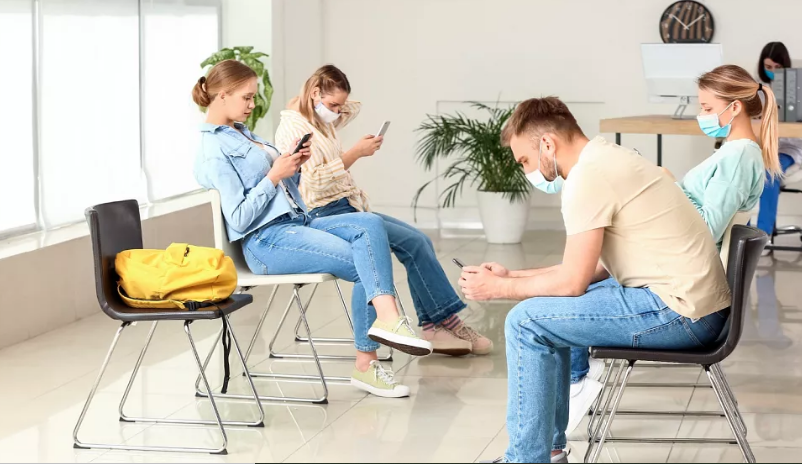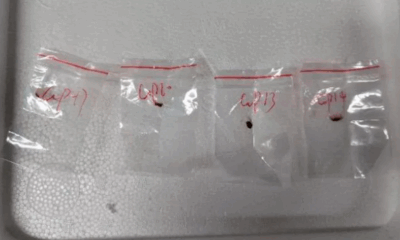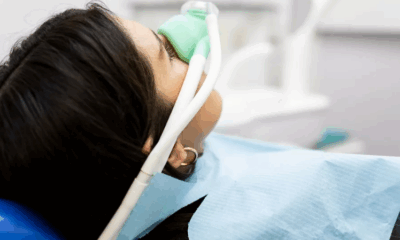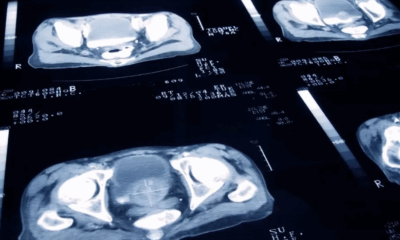Health
Could Napping at Work Boost Productivity? Experts Weigh In
Napping during the workday is a cultural norm in some parts of the world, but could it also become a game-changer for workplace productivity and well-being? Sleep experts and researchers are weighing the potential benefits of daytime naps, highlighting their role in improving focus, memory, and overall health.
Across the globe, people find creative ways to catch some rest—whether it’s napping in cars before the school run, using nap pods in busy cities, or taking short breaks while working remotely. In countries like Spain and Italy, the midday siesta has long been part of daily life, while in China and Japan, workplace napping is encouraged as a sign of dedication. But as more research emerges, the idea of incorporating structured nap times into work culture is gaining traction worldwide.
The Science Behind the Power Nap
Research suggests that short naps can significantly boost cognitive performance. James Rowley, program director of the Sleep Medicine Fellowship at Rush University Medical Center, explains that sleep is as crucial to health as diet and exercise. However, modern distractions—particularly smartphones—often interfere with healthy sleep patterns.
“A lot of people don’t get enough sleep because of electronics,” Rowley said. “People take their phones to bed, watch content, and don’t get the rest they need.”
A 2021 study found that young adults who used their phones before bedtime were more likely to experience sleep disturbances. This chronic sleep deprivation often leads individuals to rely on daytime naps for recovery.
Rowley emphasizes that the key to effective napping is duration. “Most people don’t realize that naps should be in the 15- to 20-minute range,” he said. “Anything longer can lead to sleep inertia, making it harder to wake up and leaving you groggy.”
Experts suggest that those who frequently rely on naps should also examine their nighttime sleep habits to ensure they are getting sufficient rest.
When and How to Nap for Maximum Benefits
According to Michael Chee, director of the Centre for Sleep and Cognition at the National University of Singapore, the best time to nap is mid-afternoon, as this aligns with a natural dip in the body’s circadian rhythm.
“Napping after 6 p.m. may interfere with nighttime sleep, especially for those who work traditional hours,” Chee explained.
Research fellow Ruth Leong agrees, noting that while any nap can provide some benefits, those longer than two hours can disrupt regular sleep cycles. “The optimal nap length is around 30 minutes, balancing practicality and cognitive benefits,” she said.
Experts recommend setting an alarm for 20 to 30 minutes, allowing time to fall asleep while avoiding excessive drowsiness afterward.
Creating Space for Workplace Naps
Despite the benefits, workplace napping remains a challenge in many industries, particularly healthcare. Nurses and emergency responders often work long shifts, but finding time—and a place—to rest is difficult.
“Nurses regularly struggle to have sufficient time to even use the bathroom or get fresh air, let alone take a nap,” said a spokesperson for the National Nurses United union. While the Centers for Disease Control and Prevention (CDC) encourages naps for night-shift nurses, hospital environments often do not accommodate this need.
Some businesses are addressing the issue by offering dedicated nap spaces. In New York, entrepreneur Neil Wong founded Nap York, a company that provides sleeping pods in Manhattan and Queens. Inspired by his mother, a nurse, Wong’s business caters to exhausted professionals, including super-commuters, delivery drivers, and doctors.
“In our society, there are really only two places to sleep: your bed at home or a hotel room that costs over $100 a night,” Wong said. “There’s no third space that’s quiet, private, and affordable for people who need rest.”
At Nap York, pods can be rented for about $27 an hour, with discounts available for essential workers, including police officers, firefighters, and medical personnel.
As workplace culture continues to evolve, the discussion around napping is shifting from stigma to science. With mounting evidence supporting the cognitive and health benefits of short naps, the question remains—could structured napping become the next big workplace trend?
Health
Europe Faces Growing Challenges in Meeting Medical Care Needs, EU Report Shows

A new report has highlighted stark disparities in healthcare access across Europe, revealing that a growing number of citizens face unmet medical needs due to systemic issues such as high costs and long waiting times.
According to the latest data from Eurostat and the Health at a Glance: Europe 2024 report, 3.8 per cent of EU residents aged 16 and over reported unmet medical needs in the past year. However, the percentage climbs significantly when focusing solely on individuals who actively required healthcare services — with some countries reporting unmet needs among over 20 per cent of this group.
The causes are twofold: healthcare system barriers, including long waiting lists and treatment costs, account for 2.4 per cent of all cases, while 1.4 per cent stem from personal reasons such as fear of doctors, lack of time, or lack of knowledge about available care.
Unmet healthcare needs vary widely across the continent. Estonia tops the list within the EU, with 15.5 per cent of people reporting unmet needs, followed closely by Greece and Albania, each over 13 per cent. Even wealthier Nordic countries show surprising figures — Denmark (12.2 per cent), Finland, and Norway (over 7.5 per cent) — despite high healthcare spending. Conversely, countries such as Germany (0.5 per cent), Austria (1.3 per cent), and the Netherlands (1.4 per cent) report the lowest levels, pointing to more efficient and accessible healthcare systems.
Cost is a dominant barrier in nations like Greece and Albania, where over 9 per cent of citizens cited unaffordable care. In contrast, long waiting times are the primary issue in countries like Estonia (12 per cent) and Finland (7.5 per cent).
Income inequality also plays a major role. On average, 3.8 per cent of low-income individuals across the EU report unmet needs due to healthcare system issues — more than triple the 1.2 per cent reported by higher-income groups. In Greece, that gap is particularly wide, with 23 per cent of low-income respondents affected.
Healthcare experts say these disparities reflect more than just economic factors. Dr. Tit Albreht, President of the European Public Health Association (EUPHA), noted, “Unmet health needs arise from different reasons, including how well healthcare governance integrates services to meet population needs.”
Industry leaders, such as Tina Taube of the European Federation of Pharmaceutical Industries and Associations (EFPIA), stressed the importance of timely access to diagnosis and treatment. “Unmet needs are context-specific,” she said. “It’s not just about product availability, but also healthcare system readiness.”
Andy Powrie-Smith of EFPIA added that patients in some European countries wait up to seven times longer than others for the same treatments due to regulatory delays and varying national infrastructures.
The findings underscore the need for a more coordinated, equitable healthcare strategy across the continent, especially as Europe faces the challenges of an ageing population and increasingly complex medical technologies.
Health
Chinese Nationals Charged in U.S. with Smuggling Toxic Fungus Labeled a Potential Agroterrorism Threat

U.S. federal authorities have charged two Chinese nationals in connection with smuggling a dangerous agricultural fungus into the country, a move investigators describe as posing significant national security risks.
Yunqing Jian, 33, and Zunyong Liu, 34, are accused of conspiracy, smuggling, making false statements, and visa fraud after allegedly attempting to bring Fusarium graminearum — a toxic fungus capable of devastating crops and harming humans and livestock — into the United States. The case was detailed in a court filing by the Federal Bureau of Investigation (FBI) in Detroit.
The fungus, which targets essential food staples like wheat, maize, barley, and rice, is described in a scientific journal cited by the FBI as a “potential agroterrorism weapon.” Experts warn that its spread could inflict serious damage on global food security and agricultural economies.
U.S. Attorney Jerome Gorgon Jr. emphasized the seriousness of the case, stating: “The alleged actions of these Chinese nationals, including a loyal member of the Chinese Communist Party, are of the gravest national security concerns.”
Jian made her first appearance in a Detroit federal court on Tuesday and remains in custody awaiting a bond hearing scheduled for Thursday. A court-appointed attorney for her initial appearance declined to comment.
According to the FBI’s complaint, the investigation began in July 2024 when Liu was stopped at Detroit Metropolitan Airport. During a routine screening, customs officials discovered suspicious red plant material in his backpack. Liu initially claimed not to know what it was but later admitted he planned to use it for research purposes at the University of Michigan, where Jian is currently employed and where Liu previously worked.
Authorities say Liu’s mobile phone contained an article titled “Plant-Pathogen Warfare under Changing Climate Conditions,” raising further concerns about the intended use of the samples. The FBI believes the two individuals were coordinating to introduce the pathogen into a U.S. research setting without proper clearance or oversight.
Liu was denied entry to the U.S. and deported in July. Charges against both individuals were filed this week, as prosecutors continue to investigate the scope of the alleged conspiracy.
The case underscores growing concerns in the U.S. over biosecurity and potential misuse of scientific research amid rising geopolitical tensions.
Health
US Expands Measles Vaccination Guidance Amid Global Surge in Cases
-

 Business1 year ago
Business1 year agoSaudi Arabia’s Model for Sustainable Aviation Practices
-

 Business1 year ago
Business1 year agoRecent Developments in Small Business Taxes
-

 Politics1 year ago
Politics1 year agoWho was Ebrahim Raisi and his status in Iranian Politics?
-

 Business11 months ago
Business11 months agoCarrectly: Revolutionizing Car Care in Chicago
-

 Business11 months ago
Business11 months agoSaudi Arabia: Foreign Direct Investment Rises by 5.6% in Q1
-

 Technology1 year ago
Technology1 year agoComparing Apple Vision Pro and Meta Quest 3
-

 Politics1 year ago
Politics1 year agoIndonesia and Malaysia Call for Israel’s Compliance with ICJ Ruling on Gaza Offensive
-

 Sports10 months ago
Sports10 months agoKeely Hodgkinson Wins Britain’s First Athletics Gold at Paris Olympics in 800m


























